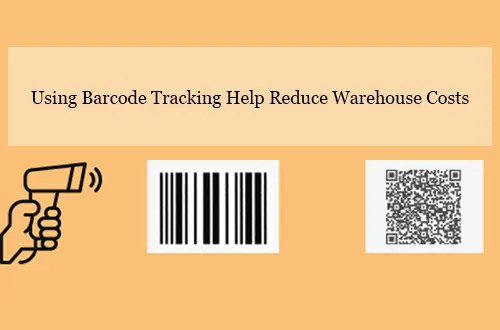Can Using Barcode Tracking Help Reduce Warehouse Costs?
The application of barcodes in logistics and warehousing can be traced back to the 1980s. As an emerging automatic identification technology, it has the advantages of high efficiency, accuracy and reliability. It is an indispensable part of modern logistics management and has quickly gained popularity in the logistics field. widely used.
In logistics and warehousing management, the role of barcodes is mainly reflected in the following aspects:
First of all, barcodes can effectively improve the identification efficiency of items. Traditional warehouse management methods usually use manual writing or inputting data, which is not only inefficient but also error-prone. By using barcodes, warehouse managers can quickly and accurately obtain item information, avoiding errors caused by human errors.
Secondly, barcoding can improve the speed and accuracy of logistics. In the logistics process, items need to be tracked and managed quickly and accurately. By using barcode technology, automatic identification and tracking can be realized in all aspects of transportation, storage, and distribution of items, greatly improving the efficiency and accuracy of logistics.
In addition, barcoding can automate inventory management. By barcoding inventory items, inventory data can be updated in real time, enabling precise control of inventory levels. At the same time, through the analysis of inventory data, we can better predict demand and arrange procurement plans, further optimizing inventory management.

Finally, barcoding can improve the security of warehouse management. By using barcode technology, items can be accurately tracked and managed to avoid items being stolen or lost. At the same time, through internal monitoring and management of the warehouse, safety accidents such as theft and fire can be effectively prevented.
The performance of using barcodes in warehouse management is as follows
By using barcodes, warehouse managers can more quickly complete data collection and recording of operations such as warehousing, outgoing warehouses, transfers, warehouse transfers, inventory counting, etc., avoiding the steps of manually writing documents and entering data, while reducing paperwork cost, thus improving work efficiency.
Reduce error rate
Using barcodes reduces human error while improving inventory tracking and positive activity verification. For example, employees can complete tasks such as picking and shipping quickly and accurately by scanning barcodes, thereby reducing additional costs such as returns and repairs and order error rates caused by human errors.
Improve data accuracy
Through automated data collection, data entry errors and data inconsistencies can be reduced, and data accuracy and reliability can be improved to better support warehouse management decisions.
Optimize inventory management
By updating inventory data in real time, precise control of inventory levels can be achieved to avoid inventory backlog and waste. At the same time, through the analysis of inventory data, we can better predict demand and arrange procurement plans, further optimizing inventory management.
Reduce labor costs
Through automated data collection and optimization of warehouse operation processes, labor costs can be reduced. Especially in busy warehouse environments, employees can quickly complete data collection and operations through handheld terminals and other devices, reducing labor costs.
In what areas does chinadivision use barcodes in the warehousing process?
Product warehousing management
When items enter the warehouse, the logistics warehousing company will use a barcode scanner to scan the items to quickly and accurately obtain item information, such as product name, quantity, specifications, etc. This helps ensure accurate inventory and recording of items.
Inventory management
Chinadivision will use barcode technology to track and manage items in the warehouse in real time. By assigning a unique barcode to each item, the inventory quantity, location and other information of the item can be quickly and accurately obtained to support precise control and optimization of inventory levels.
Shipping management
When preparing for shipment, Chinadivision will use a barcode scanner to scan the shipment to ensure the accuracy and timeliness of the shipment. At the same time, by using barcode technology, problems such as mis-delivery and missed delivery can be avoided.
Database transfer management
When items need to be moved within the warehouse, Chinadivision uses barcode technology to scan and track the items to ensure the accuracy and safety of the items during movement.
Outbound management
When items are shipped out of the warehouse, Chinadivision will use a barcode scanner to scan the items to ensure that the items are accurately shipped out and recorded. At the same time, through the use of barcode technology, problems such as mis-delivery and missed delivery can be avoided during the outbound process.
Security management
Chinadivision will use barcode technology to monitor and manage the interior of the warehouse to ensure the safety of the warehouse. For example, by using barcode technology, items in the warehouse can be accurately tracked and managed to avoid items being stolen or lost.
Chinadivision and other third-party international logistics companies usually apply barcode technology to areas such as receipt, warehousing, picking, packaging, transportation/listing, returns, and value-added services in the warehousing process to improve efficiency and accuracy and optimize inventory management. , and ensure the safety of items.





